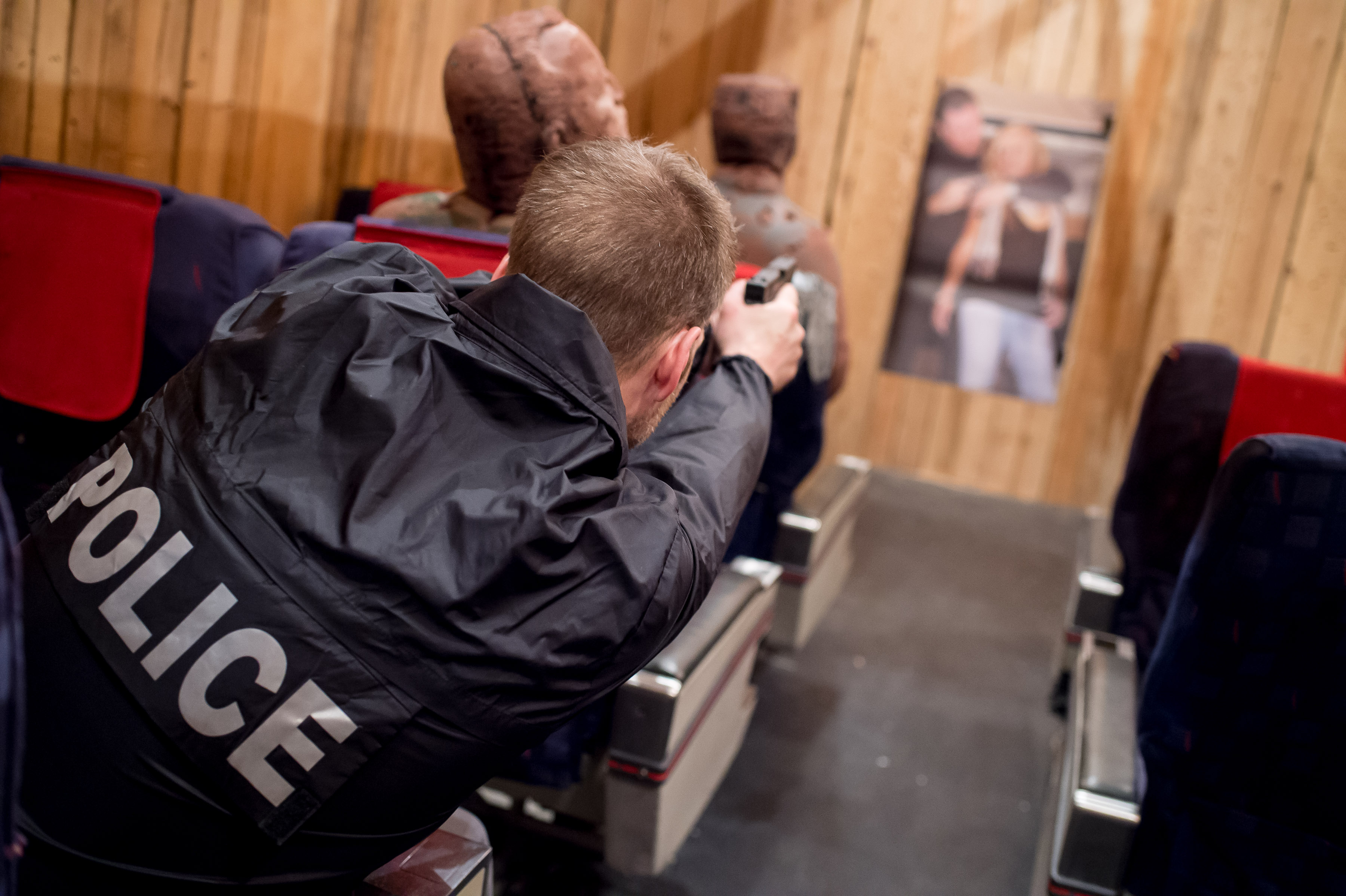Shoot to Kill’ Is Aim of RCMP Air Police

Canada Oct 8 2018
For almost two decades, trained Canadian in-flight security officers (IFSO) have flown on selected high-risk domestic and international commercial flights, usually without incident.
But before an IFSO steps on a plane, he or she has gone through a rigorous application process including physical and psychological testing and a comprehensive file review.
Once accepted, officers train for a month in behavioural analysis, close-quarter combat and firearms drills, hostage negotiation and bomb disposal. Then, after becoming a certified IFSO and boarding a flight — whether for three or 13 hours — that officer is watching and observing everything.
“There’s no such thing as routine when you’re on a flight,” says Insp. Tim Evans, who served as an IFSO on hundreds of flights in the early 2000s. “You’re always aware.”
Established in the wake of the Sept. 11, 2001, terrorist attacks, IFSOs operate under the Canadian Air Carrier Protective Program (CACPP). The initiative safeguards air travellers by putting armed officers onboard selected Canadian-registered domestic and international passenger flights.
In a rare move, CACPP officials earlier this year provided members of the media a tour of their Ottawa-area facility, which features a decommissioned aircraft where the security officers are put through a variety of mock hostage-taking and terrorist situations.
“IFSOs are taught to stop the threat and they react until the threat is neutralized,” says one instructor, who can’t be identified. “We don’t shoot to slow down, we shoot to kill. And the officer still has to keep their wits about them.”
At the combat training gym, members engage in hand-to-hand fighting, and practise how to disarm opponents armed with a knife or gun. But there’s another important aspect that’s not immediately clear.
“We do many combat scenarios, but a lot of this has to deal with mental toughness,” says an IFSO trainer. “And they need to be ready for whatever comes their way.”
The number of IFSOs with the unit is closely guarded information. But the dangers those officers are trained to deal with are well known and evolving.
“The No. 1 risk is person-delivered IEDs (improvised explosive devices) on body or in baggage,” says Supt. Janis Gray, the program’s director. “What we have now, too, which we didn’t have when the program was created, is high-risk returnees — foreign fighters.”
More airplanes and passengers in the sky are also putting additional demands on IFSOs.
Gray says commercial aviation is growing in this country and, as a result, more Canadians are travelling to high-risk destinations. She adds that one of her goals is to expand the program, not only in terms of numbers, but also diversity.
“We need to blend in with the clientele that are on the flight. If we’re to remain covert and discreet, we need to mix it up a little bit. It also enhances officer safety because they’re blending into the environment,” says Gray, who notes all of the officers are trained in developing a cover story.
IFSOs — who must have their skills recertified every six months — commit at least three years to the program.
“Three years is enough for some people,” says Gray. “It’s very demanding on family and social life. However, some people want to and do stay longer.”
Evans left the program after five years, but he says the work to become and remain an IFSO was very appealing. “You have this opportunity to get this tactical training that will benefit you,” he says. “It will teach you mental awareness that can help members later in their career. I went in as a constable and was promoted to corporal. It isn’t a dead-end job.”
It’s a sentiment a current IFSO officer shares.
“For some people it may not seem appealing. But when you don’t fly, you’re always training with top-of-the-line instructors and you get to represent the interests of the organizations and your country,” the officer says.
“We’re paid not just for what we do, but for what we can do.”



